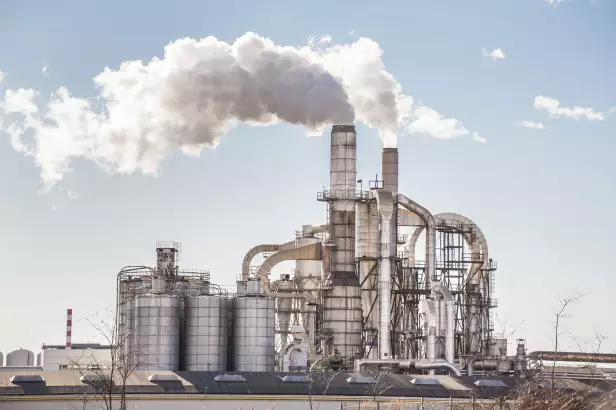What are the advantages of an RTO over other air pollution control technologies?
Air pollution is a major issue that affects the environment and human health. Many industries are responsible for emitting harmful gases and pollutants, and it is important to have effective air pollution control technologies. One of the most effective technologies for controlling air pollution is Regenerative Thermal Oxidizers or RTOs. In this article, we will discuss the advantages of an RTO over other air pollution control technologies.
Advantages of RTOs
High Efficiency
RTOs are highly efficient in controlling air pollution. They can remove up to 99% of volatile organic compounds (VOCs) from industrial exhaust streams. The RTO technology uses a bed of ceramic media to capture and burn pollutants at high temperatures. The heat generated during the combustion process is then used to preheat the incoming contaminated air, which reduces the operating cost of the system.
Low Operating Cost
Another major advantage of RTOs is their low operating cost. Unlike other air pollution control technologies, RTOs do not require any chemicals or consumables to clean the exhaust stream. The ceramic media used in RTOs does not wear out and can last for decades. The RTO system is also designed to use the heat generated during combustion to preheat the incoming contaminated air, which reduces the fuel consumption and operating cost of the system.
Low Maintenance
RTOs require very little maintenance compared to other air pollution control technologies. The ceramic media used in RTOs does not require any replacement, and the system only needs periodic cleaning. The RTO system is designed to be self-cleaning, and any ash generated during the combustion process is automatically removed from the system.
Wide Applicability
RTOs are widely applicable in different industries that produce volatile organic compounds (VOCs). These industries include printing, coating, and chemical manufacturing, among others. The RTO technology can be easily customized to meet the specific needs of different industries.
Environmental Benefits
RTOs offer significant environmental benefits compared to other air pollution control technologies. They help reduce the emission of harmful gases and pollutants into the environment, which can have a negative impact on air and water quality, as well as human health. The use of RTOs can also help companies comply with environmental regulations and standards.
Conclusion
In conclusion, RTOs are a highly efficient, cost-effective, and low-maintenance air pollution control technology. They offer several advantages over other technologies, including high efficiency, low operating cost, low maintenance, wide applicability, and environmental benefits. The use of RTOs can help industries reduce the emission of harmful gases and pollutants into the environment and comply with environmental regulations and standards.


Advantages of RTO over other air pollution control technologies
In the field of comprehensive treatment of volatile organic compounds (VOCs) exhaust and carbon reduction and energy-saving technologies, our company is a high-end equipment manufacturing and high-tech enterprise. We specialize in RTO (Regenerative Thermal Oxidizer) technology and have expertise in thermal energy, combustion, sealing, and control. Our core technologies include temperature field simulation, air flow field simulation modeling, ceramic heat storage material performance, molecular sieve adsorption material selection, and VOCs high-temperature incineration oxidation testing capabilities.
Our team consists of more than 360 employees, including over 60 R&D technical backbones, 3 senior engineers with the title of researcher, 6 senior engineers, and 47 thermodynamics Ph.D. holders. We have an RTO technology R&D center and a waste gas carbon reduction engineering technology center in Xi’an, as well as a 30,000-square-meter production base in Yangling. As a leading manufacturer in terms of global RTO equipment and molecular sieve wheel equipment, we take pride in our team’s origins from the Aerospace Liquid Rocket Engine Research Institute (Aerospace No. 6 Institute).
Our core products include the RTO and molecular sieve adsorption concentrator wheel, which, combined with our expertise in environmental protection and thermal energy system engineering, enable us to provide customers with comprehensive solutions for industrial waste gas treatment, carbon reduction, and thermal energy utilization under various operating conditions.

Our company has obtained various certifications and qualifications, including Intellectual Property Management System Certification, Quality Management System Certification, Environmental Management System Certification, Construction Industry Enterprise Qualification, High-Tech Enterprise Certification, patents for rotary valve of regenerative thermal oxidation furnace, patents for rotary wheel heat storage incineration equipment, patents for disc-shaped molecular sieve wheel, etc.

How to choose the right RTO equipment
- Determine the characteristics of the exhaust gas
- Understand local regulations and emission standards
- Evaluate energy efficiency
- Consider operation and maintenance
- Budget and cost analysis
- Choose the appropriate type of RTO
- Consider environmental and safety factors
- Performance testing and verification
It is essential to explain each point:
RTO air pollution control service process
- Initial consultation, on-site inspection, and needs analysis
- Solution design, simulation and modeling, solution review
- Customized production, quality control, factory testing
- On-site installation, commissioning, and training services
- Regular maintenance, technical support, spare parts supply
It is necessary to explain each point:
We offer a one-stop solution for RTO air pollution control, and our professional team customizes RTO solutions according to each client’s specific needs.
Author: Miya
